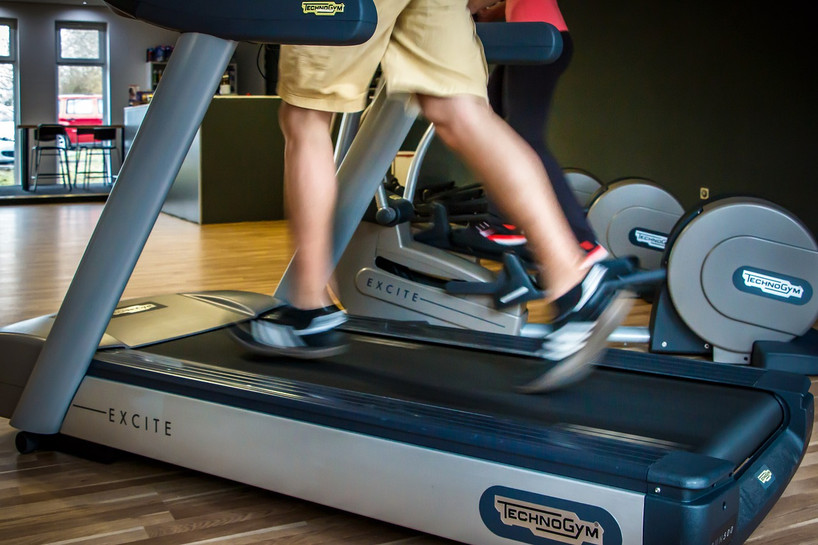Maximizing Your Workout: Treadmill vs Ellipticals - Which is Right for You?
## Understanding the differences between treadmills and ellipticals
When it comes to choosing the right equipment for your workout, treadmills and ellipticals are two popular options that offer distinct advantages. Understanding the differences between these machines can help you make an informed decision that aligns with your fitness goals.
Treadmills are a staple in most gyms and provide a familiar and straightforward exercise experience. They offer a natural running or walking motion, simulating outdoor activities. Treadmills are versatile, allowing you to adjust the speed and incline to customize your workout intensity. Additionally, many treadmills offer features such as heart rate monitoring and pre-programmed workouts to enhance your exercise routine.
On the other hand, ellipticals provide a low-impact cardiovascular workout that is gentle on your joints. The elliptical motion engages both the upper and lower body, making it a full-body workout. This can be particularly beneficial for individuals with joint issues or those looking for a low-impact alternative to running. Ellipticals also offer customizable resistance levels and pre-set workout programs to keep you challenged and motivated.
Benefits of using a treadmill for your workout
Treadmills offer several benefits that make them a popular choice for fitness enthusiasts. Firstly, treadmills allow you to control your workout environment. Whether it's raining, snowing, or scorching hot outside, you can still maintain your exercise routine in the comfort of your home or gym. This convenience ensures that weather conditions do not hinder your progress.
Furthermore, treadmills provide a versatile workout experience. With adjustable speed and incline settings, you can easily modify your workout intensity to suit your fitness level and goals. Whether you're aiming for a leisurely walk or an intense sprint, the treadmill allows you to challenge yourself at your own pace. Additionally, many treadmills offer built-in workout programs that simulate varying terrains and intensities, providing a diverse and engaging exercise routine.
Lastly, treadmills offer the opportunity for weight-bearing exercise. Weight-bearing activities help strengthen your bones and muscles, promoting overall bone health. This can be particularly beneficial for individuals looking to prevent or manage conditions such as osteoporosis.
Benefits of using an elliptical for your workout
While treadmills offer a range of benefits, ellipticals also have unique advantages that make them a popular choice among fitness enthusiasts. One of the primary benefits of using an elliptical is the low-impact nature of the exercise. The elliptical motion eliminates the jarring impact that running or walking on a treadmill can have on your joints, making it an excellent option for individuals with joint sensitivities or injuries.
Additionally, ellipticals provide a full-body workout by engaging both the upper and lower body. The elliptical motion requires the use of your arms and legs simultaneously, resulting in increased muscle activation and calorie burn. This makes the elliptical an efficient choice for individuals looking to maximize their workout time.
Another benefit of using an elliptical is the ability to reverse the motion. By pedaling in reverse, you engage different muscle groups, targeting your workout from different angles. This variation helps prevent muscle imbalances and keeps your exercise routine dynamic and engaging.
Factors to consider when choosing between a treadmill and an elliptical
When deciding between a treadmill and an elliptical, several factors should be taken into consideration. Firstly, it is essential to assess your personal preferences and fitness goals. If you enjoy the feeling of running or walking outdoors and want to simulate that experience, a treadmill may be the better choice for you. On the other hand, if you have joint sensitivities or prefer a low-impact workout that targets the entire body, an elliptical may be the ideal option.
Another factor to consider is space availability. Treadmills typically require more floor space than ellipticals, as they have a larger footprint. If you have limited space in your home or gym, an elliptical may be a more practical choice.
Budget is also a crucial consideration. Treadmills and ellipticals come in a wide range of prices, and it's important to determine how much you are willing to invest in your workout equipment. While more expensive models may offer additional features and durability, there are also budget-friendly options available that can provide a satisfactory exercise experience.
Personal preferences and fitness goals in choosing the right equipment
Ultimately, the decision between a treadmill and an elliptical should be based on your personal preferences and fitness goals. Take into account your exercise routine, the intensity level you desire, and any specific fitness targets you have set for yourself. Some individuals may prefer the rhythmic motion and versatility of a treadmill, while others may find the low-impact nature and full-body engagement of an elliptical more appealing.
It can also be beneficial to try out both machines before making a decision. Many gyms offer trial periods or equipment demonstrations that allow you to experience the feel and functionality of treadmills and ellipticals. By testing both options, you can gain firsthand experience and make an informed choice based on what feels most comfortable and effective for you.
Comparing the calorie burn and muscle engagement on treadmills and ellipticals
Calorie burn and muscle engagement are important factors to consider when comparing treadmills and ellipticals. While both machines provide effective cardiovascular workouts, there are some differences in the way they engage muscles and burn calories.
Treadmills primarily focus on lower body muscle engagement, as they involve repetitive leg movements. Running or walking on a treadmill targets muscles in the calves, thighs, and glutes. However, by adjusting the incline on a treadmill, you can also engage the muscles in your core and upper body to a certain extent.
In contrast, ellipticals offer a full-body workout by engaging both the upper and lower body simultaneously. The elliptical motion activates muscles in the arms, shoulders, chest, back, as well as the lower body muscles. This comprehensive muscle engagement results in a higher calorie burn compared to treadmills.
It is important to note that calorie burn is influenced by various factors such as workout duration, intensity, and individual fitness level. However, if maximizing calorie burn and muscle engagement is your primary goal, an elliptical may be the preferred choice.
Treadmill and elliptical workouts for different fitness levels
Both treadmills and ellipticals can be tailored to accommodate different fitness levels, making them suitable for beginners as well as advanced individuals.
For beginners, treadmills offer the advantage of simplicity. Walking on a treadmill at a comfortable speed is a great way to start building cardiovascular endurance and stamina. As fitness levels improve, the speed and incline can be gradually increased to provide a more challenging workout.
Similarly, ellipticals allow beginners to start at a lower resistance level and gradually increase the intensity as they progress. The elliptical motion is generally easier on the joints, making it accessible to individuals who may have limitations or are new to exercise.
For advanced individuals, both treadmills and ellipticals offer a range of options to keep workouts challenging and engaging. Treadmills can be used for high-intensity interval training (HIIT), where alternating periods of high-intensity sprints and recovery periods are incorporated. This type of training helps improve cardiovascular fitness and burn more calories in a shorter amount of time.
Ellipticals, on the other hand, can be used for advanced interval training by increasing resistance levels and incorporating intervals of varying intensity. Additionally, ellipticals with movable handles allow for increased upper body engagement, providing an extra challenge for advanced users.
Safety considerations when using treadmills and ellipticals
While treadmills and ellipticals are generally safe to use, it is important to follow safety precautions to minimize the risk of injury.
When using a treadmill, always start with a warm-up and cool-down period to prepare your muscles and gradually return your heart rate to normal. It is also crucial to maintain proper form and posture while running or walking on a treadmill. Keep your back straight, shoulders relaxed, and avoid leaning forward or backward. Using the safety clip or attaching the emergency stop button to your clothing is essential, as it will automatically stop the treadmill in case of a fall or imbalance.
When using an elliptical, ensure that your feet are securely placed on the pedals, and maintain a stable grip on the handles. It is important to avoid excessive leaning or jerking motions, as this can strain your muscles or cause loss of balance. Additionally, always choose a resistance level that challenges you without compromising your form.
Treadmill vs ellipticals: Which is better for weight loss?
Both treadmills and ellipticals can contribute to weight loss when incorporated into a well-rounded fitness routine. However, the effectiveness of each machine for weight loss depends on various factors.
Treadmills are particularly effective for weight loss due to their ability to burn a significant number of calories through aerobic exercise. Running or walking on a treadmill elevates your heart rate and increases your energy expenditure, resulting in fat loss over time. Additionally, the weight-bearing nature of treadmill workouts helps build muscle, which can further enhance weight loss efforts.
Ellipticals, on the other hand, offer a low-impact cardiovascular workout that can also contribute to weight loss. The elliptical motion engages multiple muscle groups and increases calorie burn, making it an efficient choice for individuals looking to shed pounds. Furthermore, the low-impact nature of elliptical workouts reduces the risk of joint strain or injury, allowing for more consistent and longer duration workouts.
Ultimately, the most effective machine for weight loss is the one that you enjoy and can consistently incorporate into your fitness routine. Choosing a machine that aligns with your preferences and fitness goals will increase the likelihood of long-term adherence and success.
Conclusion: Finding the right equipment for your fitness journey
Choosing between a treadmill and an elliptical can be a tough decision, as both machines offer unique benefits. By understanding the differences, considering personal preferences and fitness goals, and evaluating factors such as space availability and budget, you can make an informed choice that maximizes your workout experience.
Remember that the right equipment for your fitness journey is the one that you enjoy using and can consistently incorporate into your routine. Whether you choose a treadmill for its versatility and weight-bearing benefits or an elliptical for its low-impact and full-body engagement, the key is to find a machine that aligns with your individual needs and goals.
So, whether you're striving for weight loss, cardiovascular endurance, or overall fitness improvement, a treadmill or an elliptical can be the perfect companion on your fitness journey. Take the time to explore both options, try them out, and find the equipment that motivates you to push yourself further and maximize your workout potential.
CTA: Start your fitness journey today and discover the benefits of treadmills and ellipticals. Visit your local gym or fitness equipment store to try out these machines and find the perfect fit for your workout routine. Remember, consistency is key in achieving your fitness goals.


